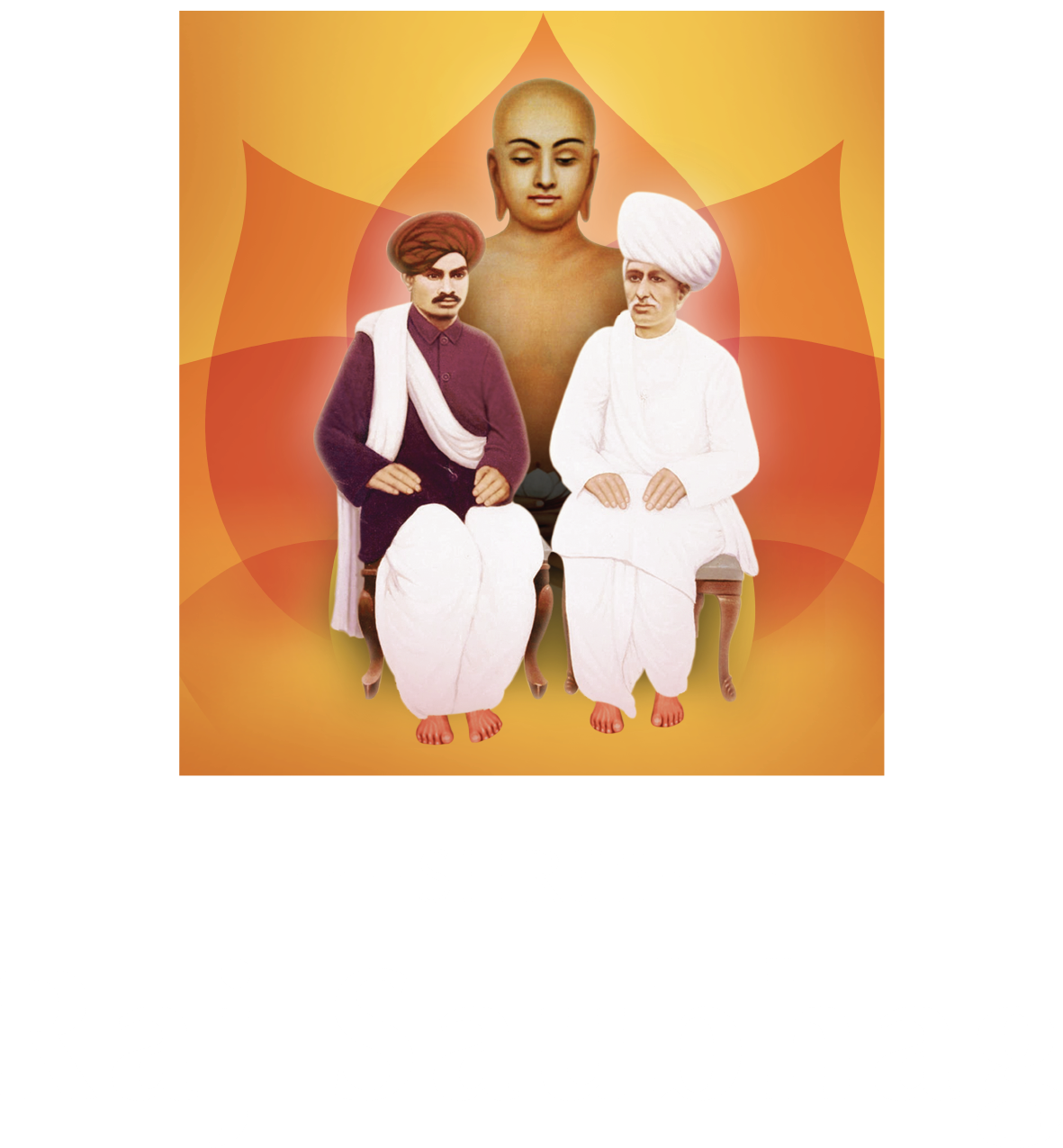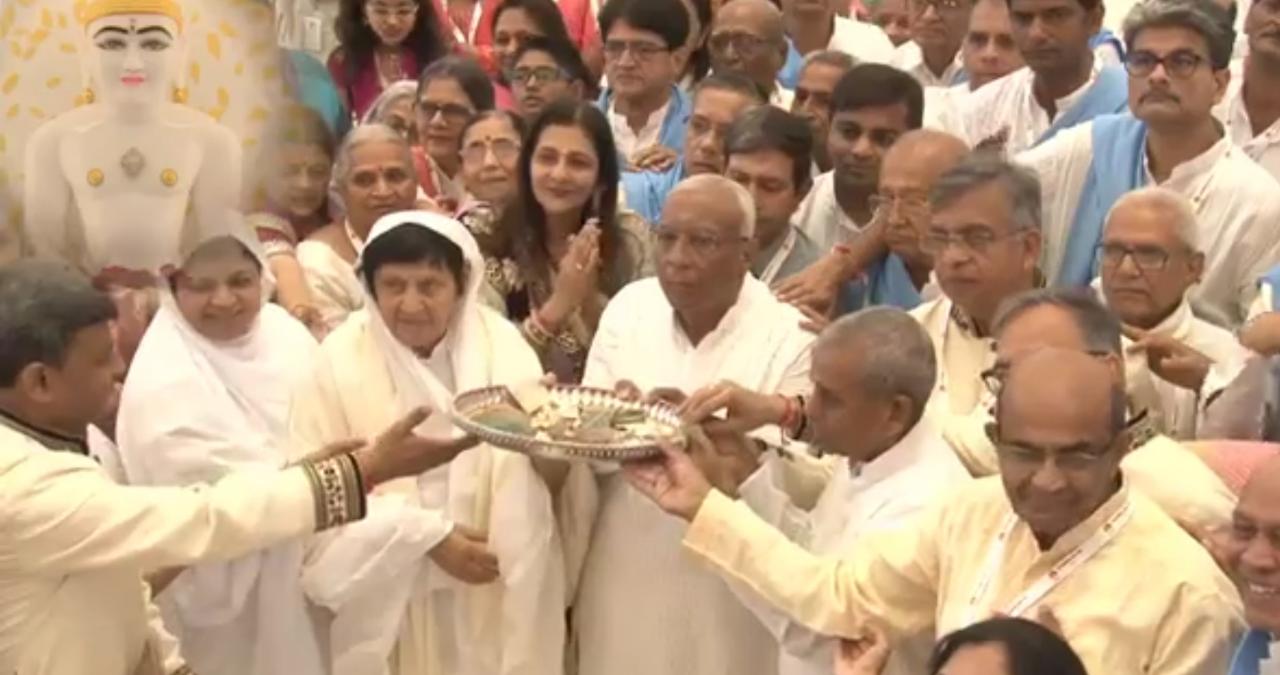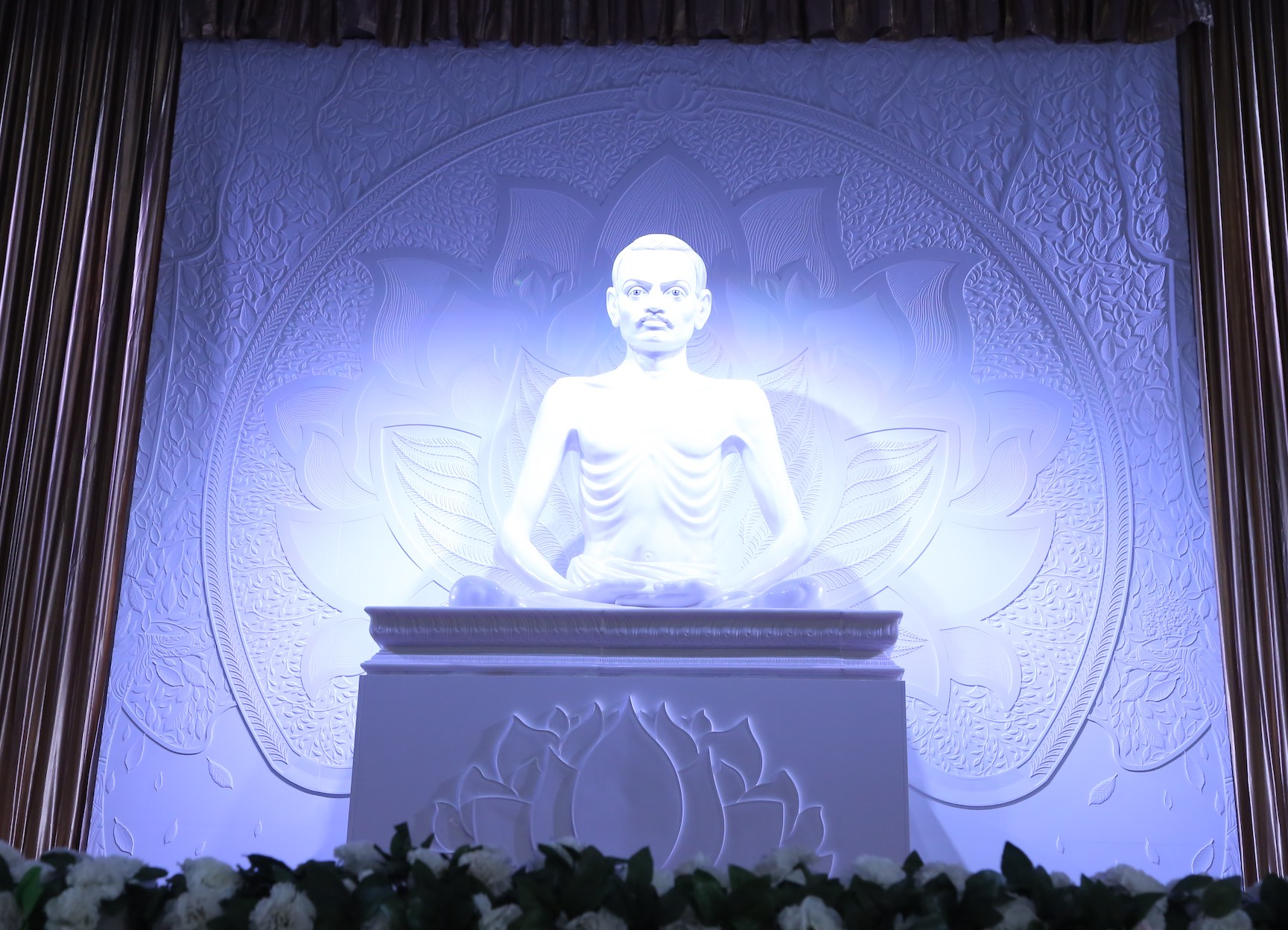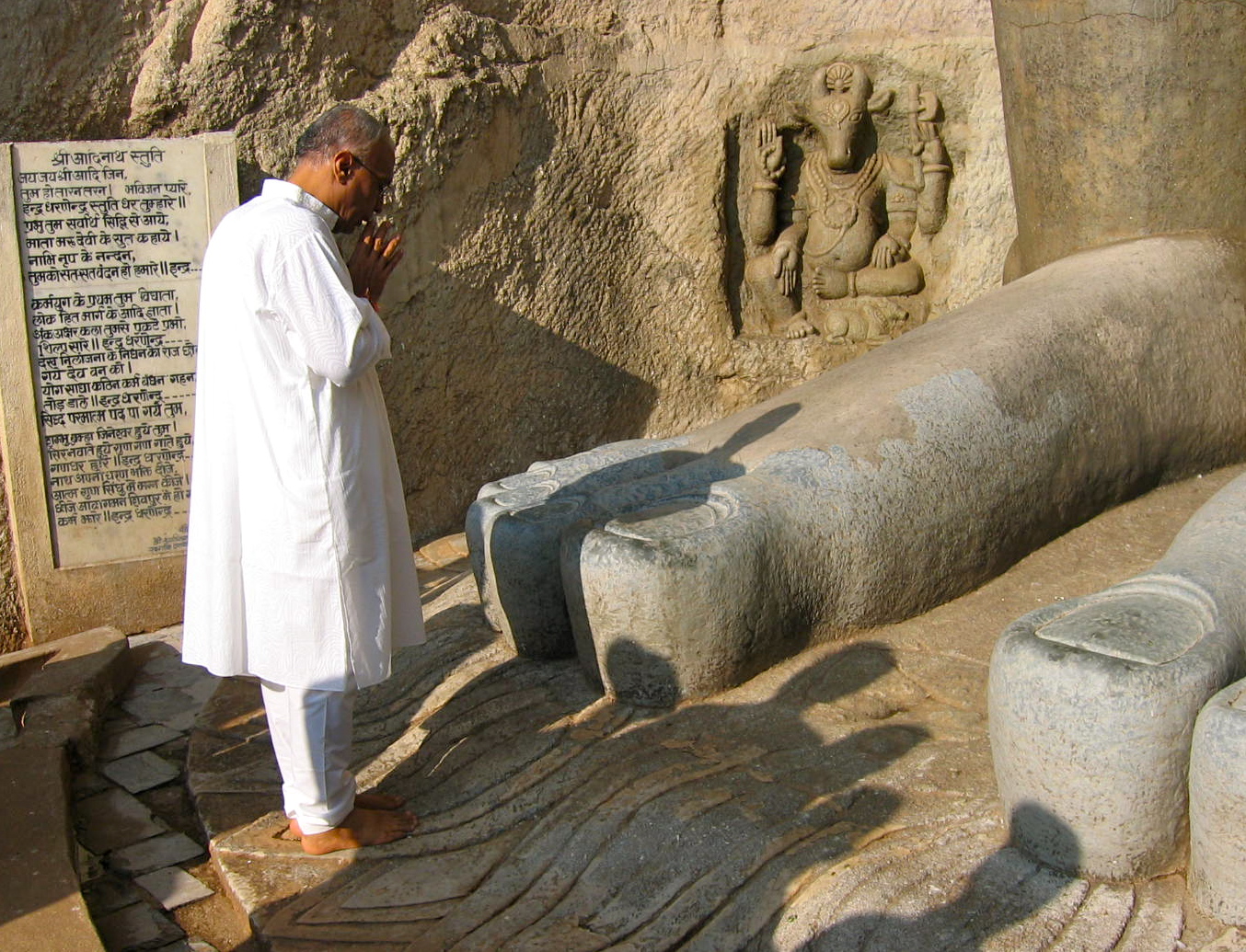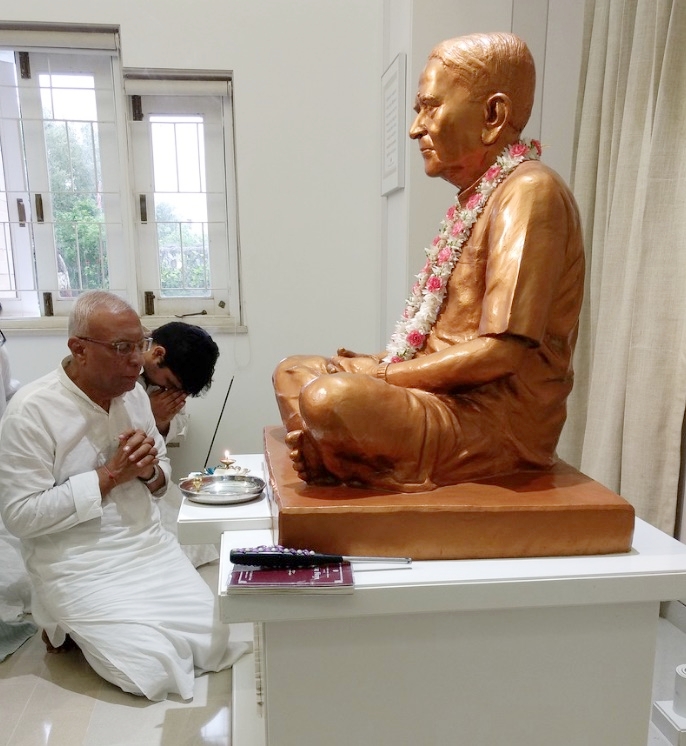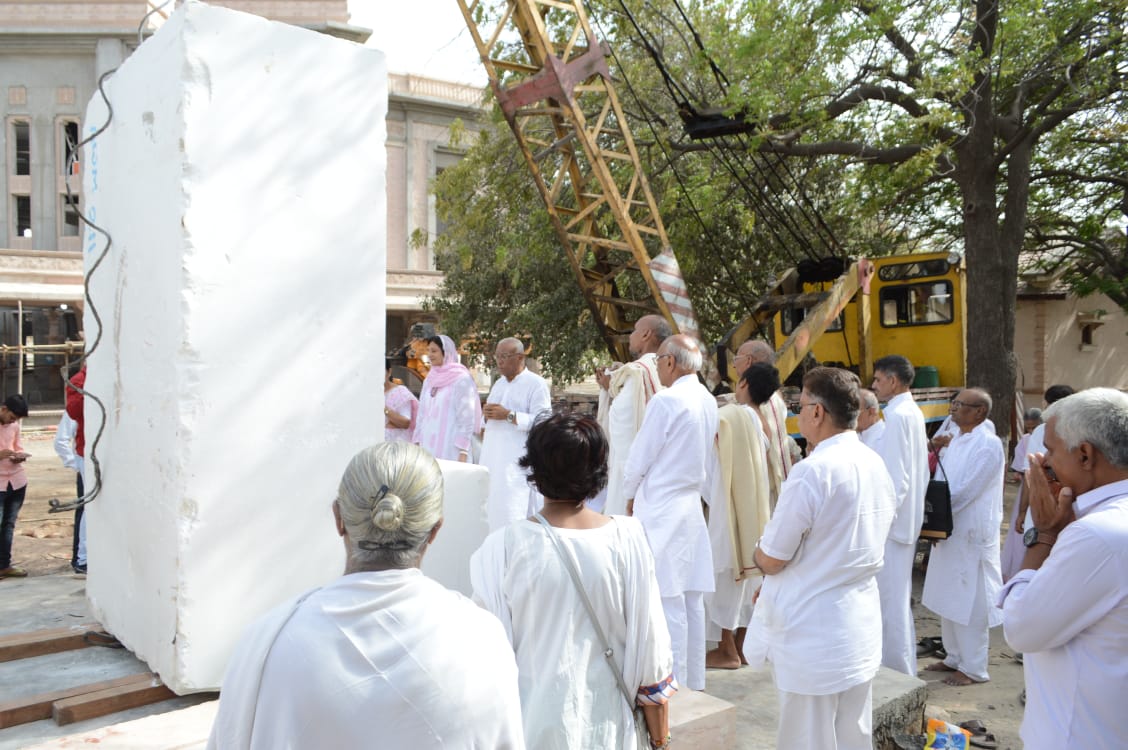Pratishtha Ceremony of 108 inch Pratimaji of Param Krupaludev Shrimad Rajchandra in Shree Raj Saubhag Ashram Sayla*
4 - 10th March 2019
Quick Links
The most mesmerizing Pratistha
Only an ardent disciple can truly understand what it means to consecrate the Lord, the Guru and the faith in the innermost realms of his heart. The most holy days of March 2019 witnessed the Pratistha Mahotsav of the simply awesome, jaw-droppingly majestic Raj Mandir and breathtakingly divine pratimaji of Shrimad Rajchandra in Sayla. This much awaited program spanned over 7 days, was presided over by eminent heads of various ashrams, and infused thousands of disciples with overwhelming devotion.
On the beautiful morning of 4th March, after morning meditation and nityakram, mumukshus participated in soulful bhakti and swadhyay. Pujya Bhaishree gave an insightful discourse on Updesh Chhaya 9. He made special mention of the devotion of the gopis for Shri Krishna. Even while going about their daily chores, their whole being was immersed in devotion for the Lord. Similar should be the devotion of every mumukshu aiming to reach their ultimate goal – enlightenment or samkit. The Panch Kalyanak Pujan in the afternoon and audio-visual film – ‘Divya Jyoti no Amar Prakash’ in the evening, brought in the first devotion filled day of the 7-Day Pratistha Mahotsav.
On the 5th of March, among the special programs were Atma Siddhi Pujan and transformation message delivered through comedy by well-known performer Shahbuddin Rathod. By some divine co-incidence Pujya Fulchandbhai Shastri, founder of Adhyatmik Sadhana Kendra in Umrala arrived in Sayla on the very day and time when the Atma Siddhi Pujan was being conducted. He graced the occasion with his presence, arriving in ashram in the morning hours, accompanied by other mumukshus. During the afternoon swadhyay, Pujya Bhaishree gave a discourse on Vachnamrutji letter 569.
On the 6th of March, the entire day was filled with swadhyay, agna bhakti, meditation, collective recitation of the Atma Siddhi shastra and ultimately devotional bhakti by Shri Ashokji Pandey and his immensely talented troupe from Varanasi, which filled the Raj Mandir hall with melodious bhajans and lingering notes of musical instruments.
The triple day special fest 7th-8th-9th March saw a flurry of celebrations – from the ceremonial procession of the Pratimaji, along with visiting dignitaries, all seated in magnificent chariots. The whole parade of devotees leading and following the chariots brought to memory, the holy rath-yatra of Bhagwan Mahavir’s diksha ceremony as described in the Kalpa Sutra. So divine was the entire occasion, that it drew a candid comment from Pujya Gokulbhai: “The entire event is reminiscent of Mahavideh Kshetra. So palpable is your devotion, O mumukshus, that I suggest all of you extend your stay in Sayla. Follow up your sadhna. Strike while the iron is hot just now. You will surely reach your goal of Samkit, and make this human birth successful.”
Parshwa Padmavati Pujan was conducted by the well known pujakaar – Shri Hiteshbhai, who explained the meaning of many shlokas which helped in fully engaging the participants during the entire 4-hour ceremony. With every consequent event matching up to the excellence of its predecessor; there remained one more cherry on the cake: a 35-minute dance performance by trained classical dancer-mumukshus from London, Nilpa and Naitika. So emotively was the message conveyed in their performance on Shrimadji’s composition – ‘Bahu Punya Kera Punj Thi’, that the audience was held spell bound. The entire moksh marg, the pitfalls on the way, the shelter provided by an enlightened master and value of this priceless human birth were explained through dance, drama, dialogue, music and emotions. Their perfectly coordinated steps along with the hand and eye movements were a delight to watch.
On the auspicious day of 8th March (Fagun sud 2, birthday of Param Pujya Bapuji), after the ceremonial procession, was the Pratistha ceremony of Bhagwan Mahavir and the inauguration of 3-D images of the lineage of enlightened masters of Sayla. All the visiting dignitaries from different ashrams in India then gave their discourses and sent good wishes and blessings.
Below are excerpts from the discourses of visiting heads of ashrams:
After the Pratistha, Pujya Ben Prabhu said the bhaavs of all the the mumukshus were extremely elevating. “I am sure that the planning for this 7-day occasion was backed by 7-year vision, consolidated by numerous years of sadhna of an enlightened master – Pujya Bhaishree. And all of us were able to participate, witness and experience this divinity due to the compounded punyas of 7-births. The whole event was complete. When a combination of bhakti and satsang lead to an inner stillness, an inner silence – the entire journey radiates completeness. I have never witnessed such a Pratistha before.”
Pujya Gokulbhai said: “This Atma is the knower of all pleasure and pain, it does not feel the hurt, sting or discomfort of pain and neither does it experience any excitement or thrill from worldly pleasures. The great Atma is completely unmoved and a witness of external events. This is the path of total non-attachment.”
Pujya Gangjibhai said: “Always remain aware that you are the powerful soul. Every activity, every action must be done with awareness. The bhakti bhaav of every mumukshu that we have witnessed during this Pratistha reminded me of the incidence in Shrimadji’s life when mentioned to Laghuraj swami that in the entire day he was reminded of the satsang he partook in when he was the disciple of Bhagwan Mahavir. In the same way, all of you mumukshus must have inculcated this bhakti bhaav in your previous births, such that in this birth too, all of you are drenched with devotion.
Pujya Chandanaji said: “So beautiful and divine was the collective bhakti bhaav that I was unable to remember anything else, or feel anything else. I felt that I was present in the Samvasaran. I have experienced such magnanimity, inclusiveness and large-heartedness in Pujya Bhaishree that he is able to unite so many different people and different streams of thoughts within him, that I shall pray to the Lord that he is able to connect people in all four corners of the earth and unite them through love and compassion. This bhakti marg will surely overcome all the hatred and jealousy that is released into societies at the behest of religion. Thank you Bhaishree, for inviting me to experience this divinely uplifting occasion. Thank you again and again, and I also send my love to all the mumukshus.”
Pujya Ben Prabhu said: “There is always an objective or goal in every event conceived by an Enlightened Master. So when a colossal sized pratimaji of Shrimadji is planned to be consecrated in this equally large Raj Mandir, there is surely a divine message that accompanies this occasion. When I attempted to connect to Pujya Bhaishree’s vision, four points came to my mind as significant factors:
Make your vision large; reach for the sky, reach for enlightenment, rather than groping for insignificant things like wealth, power, family ties etc.
Expand your thoughts and discussions to ‘Who am I? Where have I come from? Whence forth my journey?’; rather than narrow, lowly thoughts about politics, food, women or government.
Become large-hearted; inculcate qualities of brotherhood, forgiveness, understand the perspective of the other person.
See the big picture in every incidence of your lives. Auto-suggest to yourselves ‘this too shall pass’
The ashram trustees and mumukshus expressed heartfelt gratitude and felicitated architect and interior designer Shri Devenbhai and civil engineer Shri Chandrantbhai Jasani and their entire team for their selfless service in the construction of the spectacular Raj Mandir.
Shri Ashishbhai and his group immersed the audience in devotional bhakti towards the end of the evening.
9th March – Fagun Sud 3 (also inauguration day of the Ashram and Jinalay (temple) in Sayla)
The Sattar Bhedi Puja was conducted from 6.45 am on the artificial turf outside the Raj Mandir. Mumukshus gathered for participating in the puja as well as changing the Dhaja (Jain flag over the temple). This ceremony is a veneration of the 5 holiest beings – Arihants, Siddhas, Acharyas, Upadhyays and Sadhus in the entire universe.
At 10. 45 am, was the climax of the entire occasion – Pratistha of Shrimad Rajchandra’s pratimaji in the new Raj Mandir. To the uplifting music of bhajans and chants, disciples danced in gay abandon, deeply grateful to be part of this most holy event. So breathtakingly beautiful and mesmerizing was the inauguration of the Pratimaji, that every eye turned moist and every heart overflowed with pure devotion. The nectar-clad image of Shrimadji seemed like the very replica of Bhagwan Mahavir in the Samvasaran. A deep silence descended in the auditorium filled with 2000 people and every soul was overwhelmed.
10th March - Shanti Pujan
To bless the new hall, to expel negative energy and to fill with pure energy a shanti pujan was conducted in the new Raj Mandir in the final day of the Mahotsav.
Video Recordings
Day 1 - Mon 4th March
Day 2 - Tues 5th March
Day 3 - Wed 6th March
Day 4 - Afternoon Swadhyay
Day 4 - Thurs 7th March
Day 5 - Friday 8th March
Day 6 - Sat 9th March
Day 7 - Sunday 10th March
